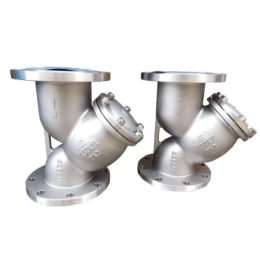The Role Of Safety Valve And Precaution For Use
In any system that involves a pipeline or equipment, it is important to ensure that the pressure of the medium does not exceed a certain limit. This is where the safety valve comes in. The safety valve is designed to protect the equipment and personnel by preventing the pressure of the medium from exceeding the specified limit. In this blog post, we will discuss the role of safety valves and the precautions that need to be taken when using them.
The Role Of Safety Valves
The main role of safety valves is to prevent the pressure of the medium in the pipeline or equipment from exceeding the specified value. This is achieved by discharging the medium to the outside of the system when the pressure rises above the specified limit. Safety valves are automatic valves that are mainly used in boilers, pressure vessels, and pipelines. They play a crucial role in protecting personal safety and ensuring the smooth operation of equipment.
There are two types of safety valves based on the opening height of the safety valve disc: micro-lift safety valves and full-lift safety valves. The former has an opening stroke height of ≤0.05d0 (minimum discharge throat diameter), while the latter has an opening height of ≤0.25d0 (minimum discharge throat diameter).
Precautions For Use
When it comes to installing and maintaining safety valves, there are a few precautions that need to be taken. Firstly, all safety valves should be installed vertically to ensure their proper functioning. Secondly, there should be no resistance at the outlet of the safety valve to avoid pressure. Thirdly, the safety valve should be specially tested before installation, and its official tightness should be checked. Lastly, the safety valve in use should be checked regularly to ensure that it is functioning properly.
When selecting safety valve products, it is important to determine the actual sealing pressure and order accordingly. Spring-loaded safety valves come with different working pressure levels within a nominal pressure range. It is important to indicate the valve body sealing pressure when ordering to ensure that the safety valve functions optimally.
Conclusion
Safety valves are an essential component of any system that involves a pipeline or equipment. They play a crucial role in protecting personal safety and ensuring the smooth operation of equipment. When it comes to using safety valves, it is important to take the necessary precautions to ensure that they function properly. By following the guidelines outlined in this blog post, you can ensure that your safety valves provide optimal protection to your equipment and personnel.
- Points To Keep In Mind When Installing Valves
- The Advantages of Pressure Seal Valves in High-Pressure Systems: A Comprehensive Guide
- Five Reasons to Choose a Fully Welded Ball Valve Over a Standard Ball Valve
- What to Consider When Installing a Ball Valve
- Development trend and prospects of valve standards in my country
- Precautions for Butterfly Valve Installation



